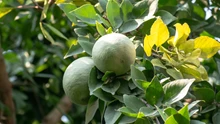
Some species have a disproportionate impact on the environment in which they live. Beavers construct dams, which create ponds where fish thrive. Otters in kelp forests consume enough sea urchins to allow the kelp to grow without being eaten first. These so-called keystone species are responsible for the stability of their ecosystem.
But what if ecosystems aren't just dependent on a single species, but can also be made or destroyed by a single gene? Researchers demonstrated the existence of a "keystone gene" in a study published on Thursday in Science. The discovery could change how scientists think about how ecosystems and the species that live in them survive over time.
Research Findings:
The researchers created several miniature ecosystems in the lab, each with four species. Arabidopsis thaliana, a small annual plant that is a favourite study organism among biologists, was at the bottom of the food chain (its genome was sequenced more than 20 years ago). The plant provided food for two species of aphids, which in turn fed a parasitoid wasp in each ecosystem.
Arabidopsis plants were found in abundance in each bread-box-sized ecosystem. The plants in some systems were genetically identical- a monoculture. In others, genetic variations were introduced by turning on and off three genes in various combinations- MAM1, AOP2, and GSOH.
These genes were chosen because they maintain the production of compounds known as aliphatic glucosinolates, which protect the plant by repelling hungry aphids. The number of genetic combinations in some of the experimental ecosystems varied more than in others, and the researchers observed how well plants, aphids, and wasps coexisted in each scenario.
The team predicted that ecosystems with more genetically diverse plants would be more stable. In comparison to monocultures, the extinction rate of insects decreased by nearly 20% for each plant with a different genetic makeup that the researchers added to the mix.
The researchers were taken aback by the fact that the outcome appeared to be dependent on a single gene. Regardless of diversity, systems containing plants with a specific variant, or allele, of the AOP2 gene reduced insect extinction by 29% when compared to systems lacking it. Essentially, changing that AOP2 allele results in the loss of the insects.
Increased genetic diversity aided the insects by increasing the likelihood of aphids encountering plants containing this one critical gene variant. "We expected the diversity effect," says lead author Matt Barbour, an ecologist at the University of Zurich. "However, the unexpectedly large effect of a single gene was surprising."
The mechanism by which the AOP2 allele influenced the aphids was also surprising. Although the variant altered how a plant produced its aphid-deterring compound, it also allowed the plant to grow faster. This allowed the aphids, as well as the wasps that fed on them, to grow faster. "The aphids that feed on the plant are actually able to get bigger, and they're able to reproduce more quickly, so their populations are able to grow faster," Barbour explains. "I didn't expect AOP2 to have this effect."
"Showing that a single gene can reorganize ecological networks is a really neat example of what happens when you combine genetics and cutting-edge ecological research," says Rachel Germain, a biodiversity scientist at the University of British Columbia who was not involved in the study. "This is the first study of its kind, and I'm sure there will be many more."
Conservation biologists have long known that diverse ecosystems are more than the sum of their parts and that they are more stable in particular. Similarly, more genetically diverse populations of species are more likely to survive, owing to their increased ability to adapt to a changing environment. The effect is analogous to diversifying an investment portfolio: one cannot predict which genes will lead to greater population success, so the more options one has, the more likely it is that something will come through.
However, the new findings point to a mechanism that could make genetic diversity critical for ecosystem sustainability. If specific gene variants—keystone genes—are lost from populations, other species, not just the genes' owners, may become extinct. "It's not really about genetic diversity, but having a diverse genetic pool increases your chances of finding that singularly important mutation," Germain explains. "That's one of the cool things about this paper—it may be something that not many ecologists have thought about that much."
Perhaps, Barbour speculates, science will eventually be able to use keystone genes to protect and restore biodiversity. "For a long time, humans have been breeding plants and, more recently, genetically modifying them," he says.
"What if we knew the genes that would not only help them survive but also promote biodiversity?" That's a really big, really interesting implication, in my opinion." But that is something that will have to be worked out in the future. "We're just getting started trying to dissect these gene effects on ecosystems," Barbour adds.
(Source: Scientific American)











